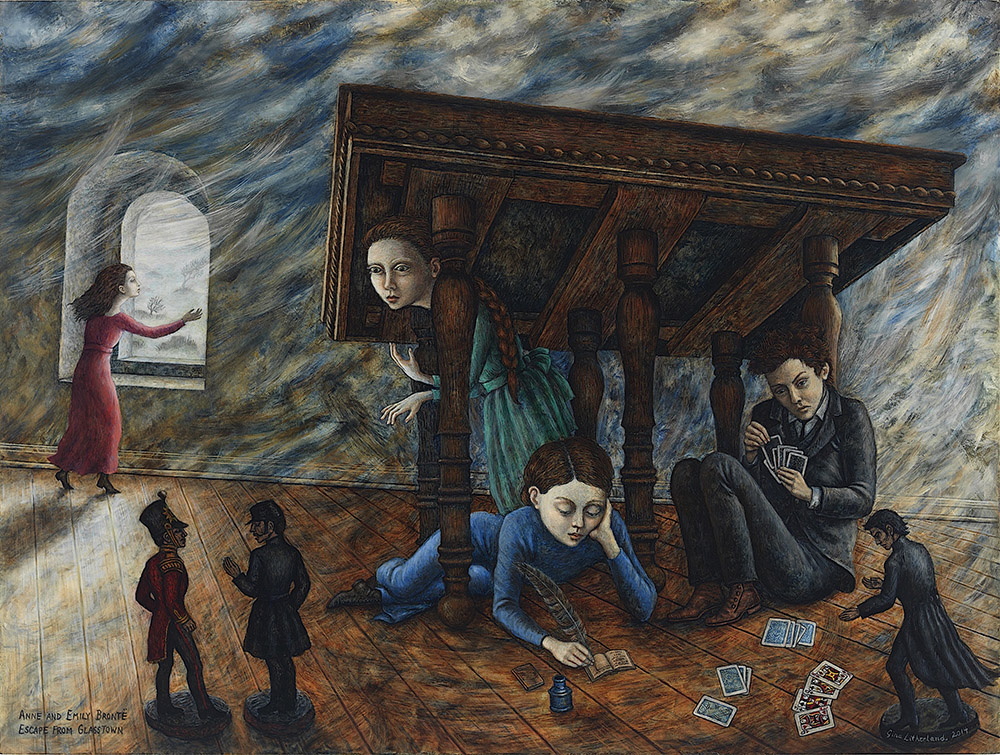Gina Litherland
The Brontës’ Miniature Kingdoms

Anne and Emily Brontė Escape from Glass Town.
When nine-year-old Branwell Brontë received a collection of toy wooden soldiers as a gift, he and his sisters, Charlotte, Emily, and Anne each selected one, named it, and set to work making and writing little books, magazines and plays of the adventures of their new miniature alter egos. Branwell and Charlotte initially named their soldiers Napoleon and the Duke of Wellington, while Emily and Anne, the younger sisters, gave theirs the charming names of Gravey and ‘Waiting Boy’. These were soon changed to Parry and Ross, after two heroic Arctic explorers of the time. The books were tiny, bound from rough household materials and printed by hand in tiny script to reflect their authorship by the toy heroes. The new personalities projected into the little wooden bodies loomed far beyond their original names. They became kings and poets, criminals and madmen. The precocious children were well versed in Romantic literature and they had found their catalysts to break out of Yorkshire into another world. Their new kingdom was named Glass Town by Branwell and Charlotte and all four children located their stories there. Eventually Charlotte and Branwell extended the boundaries of Glass Town into another region called Angria, and Emily and Anne created a private kingdom of their own called Gondal. The miniature world represents the private and unseen, what escapes notice as the rest of the world attends to business. It is in the miniature world of invisibility that one can feel totally confident in the imagination, where it can germinate like a seed in a dark, moist place. It was in the sagas of these tiny kingdoms that the Brontë sisters planted the seeds for their later dark and mesmerizing heroes, Rochester, Heathcliff, and Huntingdon. That which escapes attention for a while acquires an ineffable power of its own.
